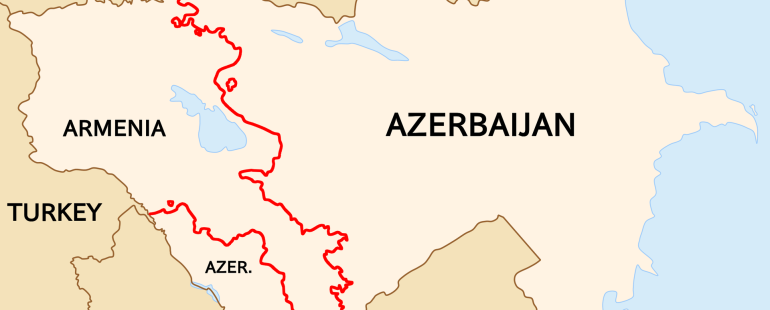
International Export to Armenia via Iran: A Comprehensive Overview
Armenia, a landlocked country located in the South Caucasus region, shares borders with Turkey, Georgia, Azerbaijan, and Iran. Given its geographical constraints, Armenia’s trade routes are limited, making its relationship with neighboring countries, particularly Iran, crucial for international trade. This article explores the dynamics of exporting goods to Armenia through Iran, examining the bilateral trade relations, logistics, and implications for businesses.
The Significance of the Armenia-Iran Relationship
The relationship between Armenia and Iran has historical roots, characterized by mutual interests and cooperation. Both countries share several attributes, including a desire to diversify their economic partnerships, which drives trade collaborations. For Armenia, Iran acts as a vital conduit for accessing global markets and securing goods that may not be available domestically or through other export routes.
Key Trade Goods
Import-export transactions between Armenia and Iran encompass various sectors. Some key categories of goods exported to Armenia via Iran include:
- Energy Products: Iran is a major supplier of natural gas and electricity to Armenia. The Iran-Armenia gas pipeline facilitates the transport of natural gas, which is crucial for Armenia’s energy security.
- Food and Agricultural Products: Iran exports a variety of food products to Armenia, including fruits, vegetables, and grains. These goods are vital to Armenian consumers, especially given the limited agricultural output in Armenia’s terrain.
- Construction Materials: With a growing construction sector, Armenia imports materials like cement, steel, and other essential construction inputs from Iran.
- Automobiles and Machinery: Iran is emerging as a source for automotive parts and machinery that support Armenia’s manufacturing and automotive industries.
- Pharmaceuticals and Chemicals: Both nations engage in the trade of pharmaceuticals, chemicals, and other healthcare products, which are essential for public health.
Logistics of Exporting to Armenia via Iran
Exporting goods to Armenia through Iran involves several logistic components:
- Transit Routes: The primary land route for shipments involves crossing into Iran and then entering Armenia via the Meghri region. The distance and the road infrastructure significantly affect transportation times and costs.
- Customs Regulations: Exporters must navigate customs procedures in both Iran and Armenia. Understanding these regulations is vital for ensuring compliance and minimizing delays.
- Transport Modes: While most goods are transported via road, rail options are also available. Efficient logistics management and selecting reliable transport companies are critical to maintaining supply chain integrity.
- Infrastructure Considerations: The state of infrastructure, including roads and border facilities, plays a significant role in the efficiency of trade. Both Iran and Armenia have invested in enhancing their transportation and logistics capabilities to facilitate trade.
Challenges in Exporting via Iran
Despite the advantages, several challenges can affect the export-import process:
- Sanctions on Iran: The ongoing sanctions imposed on Iran by various international bodies can complicate transactions, leading to increased costs and risks. Exporters must navigate these sanctions carefully to avoid legal repercussions.
- Political Tensions: Regional geopolitical tensions can influence trade dynamics. Companies must remain updated on political developments that could affect cross-border trade.
- Logistical Delays: As with any transit route, logistical challenges, including delays at border crossings and transport inefficiencies, can impact the timely delivery of goods.
- Market Competition: Armenian markets are competitive, and companies need to offer quality products at competitive prices to establish a foothold.
The Role of Trade Agreements
The trade relationship between Armenia and Iran is further strengthened by formal agreements. Both countries have engaged in discussions to enhance trade flows, reduce tariffs, and cooperate in various sectors, including transportation, energy, and agriculture.
Opportunities for Exporters
Despite the challenges, significant opportunities exist for exporters looking to reach the Armenian market via Iran:
- Emerging Markets: Armenia presents a relatively untapped market for various goods, offering potential for export growth, especially in consumer products and industrial goods.
- Bilateral Cooperation: Continued efforts by both governments to enhance trade relations open avenues for exporters to expand their market presence.
- Investment Opportunities: Iran’s economic landscape can provide opportunities for joint ventures, allowing foreign companies to benefit from local market access while reducing risks.
Conclusion
Exporting goods to Armenia via Iran presents a unique landscape filled with opportunities and challenges. Businesses must carefully assess the logistics, regulatory environment, and market conditions before entering this corridor. By leveraging the strategic partnership between Armenia and Iran, exporters can navigate this complex market successfully and contribute to the economic development of both nations. As both countries continue to seek closer ties, the potential for growth in international trade will increase, benefiting exporters and consumers alike.

Comments (No Responses )
No comments yet.